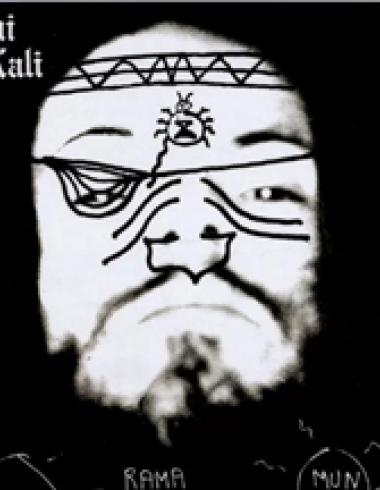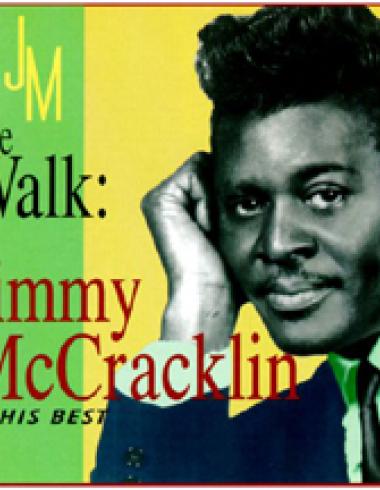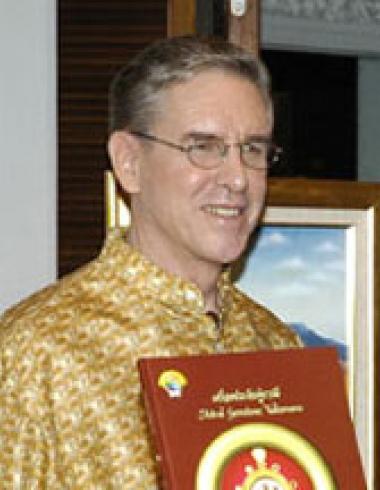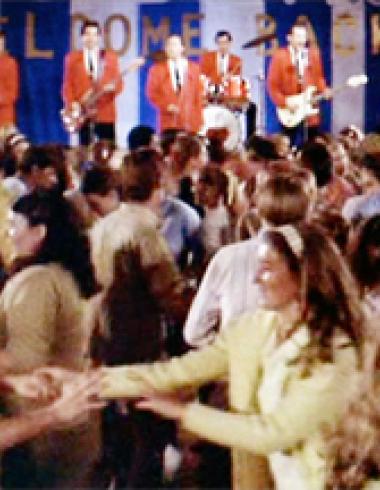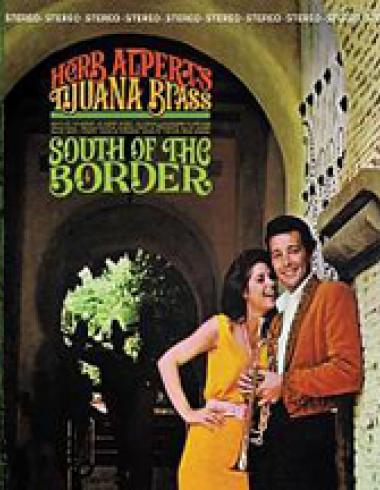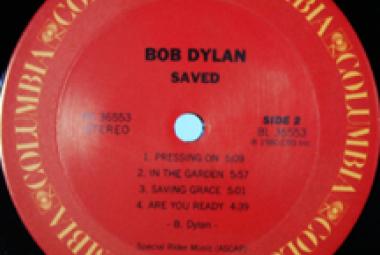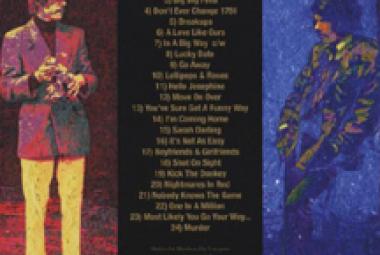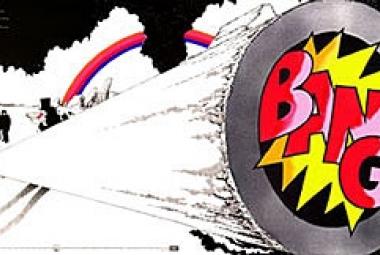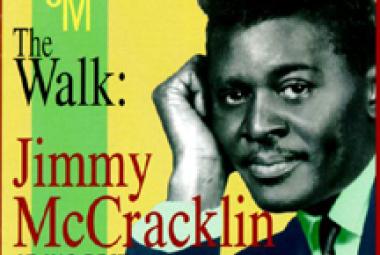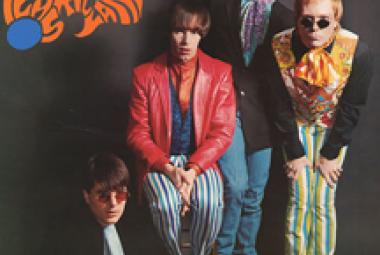Buddy Holly (September 7, 1936 – February 3, 1959) was an American musician and singer-songwriter and a pioneer of rock and roll. Although his success lasted only a year and a half before his death in an airplane crash, Holly is described by critic Bruce Eder as “the single most influential creative force in early rock and roll”. His works and innovations inspired and influenced contemporary and later musicians, notably the Beatles, the Rolling Stones, Bob Dylan, and Elvis Costello, and exerted a profound influence on popular music. In 2004, Rolling Stone magazine ranked Holly number 13 on its list of the 100 greatest artists of all time. (More from Wikipedia)
At the top of the list of “might have been” in rock and roll has to be the crash on February 3, 1959 in an Iowa cornfield of a small airplane carrying three early rockers to their graves: Buddy Holly, Ritchie Valens, and The Big Bopper. The stories around this tragic event include those about several men who were not on the plane for one reason or another, most famously future country music star Waylon Jennings, who had recently joined Buddy Holly’s band after the break-up of his previous band the Crickets. Also, Dion DiMucci (of Dion and the Belmonts) couldn’t afford the $36 cost, so he also decided not to board the plane.
* * *
In 2009 (on the 50th anniversary of the airplane crash), Don McLean wrote an editorial for CNN.com that told of his learning of it the following morning: “Buddy [Holly]’s death, for me, an impressionable 13-year-old, delivering papers, was an enormous tragedy. The cover photo of the posthumously released [The] Buddy Holly Story and The Buddy Holly Story, Vol. 2, coupled with liner notes written by his widow, Maria [Santiago-Holly], created a sense of grief that lived inside of me, until I was able to exorcize it with the opening verse of ‘American Pie’.”
* * *
Some people who should know better are reluctant to put Buddy Holly in the first rank of the founding fathers (and mothers) of rock and roll, among the others whose importance is undisputed.
* * *
Chuck Berry had previously been a part of Alan Freed’s touring “Biggest Show of Stars for 1957” that had a truly amazing lineup: Fats Domino, the Everly Brothers, Buddy Holly, LaVern Baker, Eddie Cochran, the Spaniels, the Drifters, Clyde McPhatter, Paul Anka, Frankie Lymon, and others.
* * *
Why Fur? Good question; basically, I just pulled the band choice out of the air. As I have finally gotten to the point in the post where I am actually discussing the UARB, I now believe that Fur is a fine if left-field choice to end a discussion of the foundations of rock and roll: This trio illustrates well the idea that first germinated in the person of Buddy Holly and was later expanded in spades during the first-wave punk rock revolution of the late 1970’s – that rock and roll is for everybody who wants it badly enough.
(June 2013/1)
In 1998, an organization called Native American Music Association & Awards was started in order to bring awareness of the contributions of Native Americans to music in all its forms; the Awards have been presented annually since that time. The surprise at taking even a quick glance at their “Did You Know” roster at www.nativeamericanmusicawards.com/halloffame.cfm is the incredible number of stars of popular music who have Native American blood – the tribe or confederation name(s) are given in parentheses here and elsewhere in this post: Elvis Presley (Cherokee), Jimi Hendrix (Cherokee), Hank Williams (Choctaw), Willie Nelson (Cherokee), Ritchie Valens (Yakui), Aaron Neville and the Neville Brothers (Choctaw/Cherokee), Loretta Lynn and her sister Crystal Gayle (Cherokee), Kitty Wells (Cherokee), Wayne Newton (Powhatan), Michael Jackson and the Jacksons (Choctaw/Cherokee), Link Wray (Shawnee), Richie Havens (Blackfoot), Robbie Robertson of the Band (Mohawk), Tina Turner (Navaho), Cher (Cherokee), Rita Coolidge (Cherokee), Eddie Van Halen of Van Halen (Native Hawaiian – Native Americans who are not among those often called Indians), Tori Amos (Cherokee), Toni Tennille of the Captain and Tennille (Cherokee), Billy Ray Cyrus and his daughter Miley Cyrus (Cherokee), Anthony Kiedis of Red Hot Chili Peppers (Mohican), LL Cool J (Cherokee), Beyoncé (Creole), etc.
Tommy Allsup (Cherokee) was a member of Buddy Holly’s new band in 1959; he “lost” a coin flip with Ritchie Valens and was thus not on board the airplane that crashed on the day the music died.
* * *
All three of the men who perished on the day the music died weren’t using their birth names – most obviously in the case of the Big Bopper. As suggested by his manager Bob Keane, Ritchie Valens (born, Anglicized, Richard Steven Valenzuela) got a “t” in his first name and shortened his surname in order to widen his appeal. As to Buddy Holly, “Buddy” could have just been a nickname, but “Holly” also didn’t match up exactly to his birth name Charles Hardin Holley (the dropped “e” was inadvertent, they say).
(August 2013)
* * *
There was a great deal of buzz associated with the Blind Faith album (mainly due to its Cream connections, at least in the U.S.), but there is every indication that it was rushed to the market. There are only six songs on the album, one of them a Buddy Holly song, “Well All Right”; one of the tracks, “Do What You Like” is a 15-minute jam.
(May 2014)
* * *
When a young band or musician is just starting out, they would often come to the recording studio with a handful of finished songs and others that were only partially written. The more experienced record producer or arranger would then help the band flesh out the other songs and, as a result, frequently receive partial credit for having written the songs.
This was also used as a device to compensate the producer. On many of Buddy Holly’s records, their producer Norman Petty is listed as one of the songwriters; and the same is true of Robert ‘Bumps’ Blackwell on those by Little Richard.
Sometimes Buddy Holly himself isn’t credited as a songwriter; that happened with one of his best known recordings, “Peggy Sue”, but at Jerry Allison’s insistence, his name was added to the credits after his death.
(April 2015/1)
* * *
Though that was not the only time the song was released on a 45, “I Wanna Be Your Man” became the “B” side for the first U.S. single by the Rolling Stones; the “A” side was their terrific cover of the Buddy Holly song, “Not Fade Away” that features a pounding Bo Diddley beat. The Rolling Stones recording of “I Wanna Be Your Man” was only released as a single and did not appear on a studio album in either the US or the UK; it was included on several compilation albums in later years though, but was not released in the US until Singles Collection: The London Years (1989).
(May 2015)
* * *




